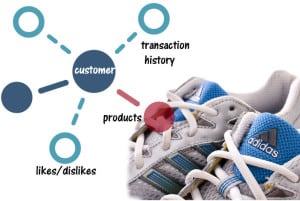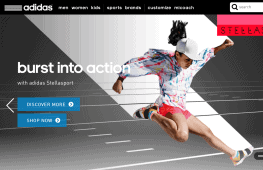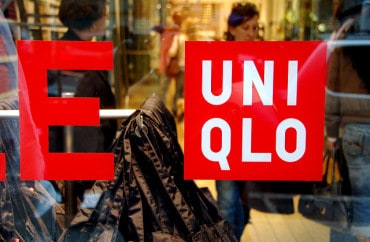
To help eventually power e-commerce and product suggestions, Adidas turned to a Neo4j graph database to exploit data relationships through shared metadata.
Name of Organization: Adidas Group
Industry: Sportswear/sporting equipment
Location: Herzogenaurach, Germany/Portland, OR USA
Business Opportunity or Challenge:
Global e-commerce opens up a vast assortment of new markets. However, being able to respond to customer preferences and requirements, in real time or near-real time, requires a lot of back-end work to pull together many data sources.
That was the challenge faced by the Adidas Group, a global corporation in the sporting goods industry and one of the world’s most valuable brands. With annual sales of $15.8 billion, the Adidas Group offers a broad portfolio of footwear, apparel and hardware around the core brands of Adidas, Reebok and TaylorMade.
With such a vast global audience, the company wanted to step up its game by offering a more personalized experience to online shoppers. The ultimate goal of the effort is to build a recommendation engine to offer up relevant, real-time suggestions to shoppers on adidas.com in addition to social and mobile channels. But first, Adidas needed to bring all its data assets together to provide a singular experience.
As with many large retailers, Adidas was beset by a wide array of information silos, including data about products, markets, social media, master data, digital assets, brand content and other key areas. “We have many different silos, many different data domains, and in order to make sense out of our data, we needed to bring those together and make them useful for us,” said senior project manager Sokratis Kartelias.
On the technical level, data models didn’t align between the information silos, and there wasn’t a standard, consistent way to communicate between the different data domains. Without a way to effectively consolidate such data, the company felt it was missing out on opportunities to provide the most compelling and relevant content to its consumers, as well as offering enhanced product recommendations to drive more revenue.
Unlike other online retailers that merely offered static content to all of their website visitors, Adidas wanted to personalize content based on user interests, local languages, regional sporting news and market-specific product offerings. Additionally, the Group wanted to provide standardized access to this content-sharing system with its internal teams, partners, IT units and others in a way that was fast, reliable and searchable so teams didn’t have to recreate existing content.

Rather than trying to consolidate all of the Adidas Group’s information silos into a single place, Kartelias started a “Shared Metadata Service” which would effectively accomplish the same result without the effort of actually moving the data. The service would enable employees across the Adidas Group to categorize and search for content across every platform and division of the enterprise. The Shared Metadata Service would also allow Adidas to target audiences with content organized by language, country, tone, sport and athlete. In addition, the service would need to include search engine optimization of content for various local languages.
The Shared Metadata Service would also govern the roles and ownership of different employees to ensure safe, high-quality data. To build the Shared Metadata Service, Kartelias turned to Neo4j. The Neo4j graph database enabled access and search to all data, along with support for new emerging services. The graph db lays the groundwork for leveraging data relationships with online content.
In order to implement the Shared Metadata Service on Neo4j, Kartelias’ team first had to unify the different models between content, product data and master data. The team was able to define an optimal data model that connected all three domains, relating information as diverse as marketing campaigns, product specifications, contracted athletes and associated teams, sports categories, gender information and more.
Measurable/Quantifiable and “Soft” Benefits From This Initiative:
Today, the Shared Metadata Service has 2 million nodes with nearly 10 million relationships. Kartelias and his team are continuously integrating the service with new sources and clients, enabling the Adidas Group to deliver the most compelling customer experience to their online shoppers with the right content at the right time.
This is only the first step, Kartelias says. His team has plenty more data domains they want to integrate with their graph db. After completing the first version of the Shared Metadata Service, Kartelias’ team is now building services and extensions around Neo4j to enable more teams and partners to use the integrated power of the graph database.
Work is underway on the real-time recommendation engine. Kartelias is also developing consumer profiles based on favorite players and sports teams so that targeted content can be offered up to the appropriate fan. Other planned integrations include the Adidas Group’s CRM, social media platforms, and wholesale and retail partner data.
(Source: Neo4j)
Want more? Check out our most-read content:
White Paper: How to ‘Future-Proof’ a Streaming Analytics Platform
Research from Gartner: Real-Time Analytics with the Internet of Things
E-Book: How to Move to a Fast Data Architecture
The Value of Bringing Analytics to the Edge
Three Types of IoT Analytics: Approaches and Use Cases
Video — Plat.One CEO: Enterprise IoT Doesn’t Have to Be Hard
Three Types of IoT Analytics: Approaches and Use Cases
Liked this article? Share it with your colleagues!





























